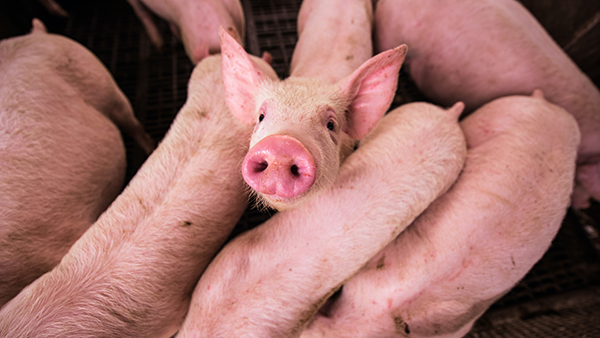While the drug pricing provisions of the Inflation Reduction Act (IRA) are expected to kill drug innovation and hamper development of new treatments, the legislation signed into law on Aug. 16 contains good news for biotech companies working on climate solutions—and for the health of our planet.
An analysis of the IRA’s specific provisions shows strong support for further development of sustainable aviation fuels (SAFs) and a range of excellent opportunities for biotech solutions that address the climate impacts of agriculture, according to Erick Lutt, Senior Director, Federal Government Relations at the Biotechnology Innovation Organization (BIO).
“The bill would invest $369 billion in American energy security and fighting climate change—the single largest infusion of federal cash aimed at tackling the climate threat in U.S. history,” Lutt said. “The investments that are in there are great, not just for helping incentivize our technologies but they’re great for the planet, too.”
Under the Paris Climate Accords, the United States committed to halving its 2005 emission levels by 2030. The bill would nearly achieve that, reducing domestic emissions approximately 40% below 2005 levels by 2030, according to an estimate tentatively verified by independent experts.
Tax incentives for SAFs and biofuels
A major victory in the legislation, from BIO’s perspective, is the inclusion of a tax credit for SAFs sold or used in 2023-2024. The IRA takes language from the proposed Sustainable Skies Act, basically enacting that proposal, which BIO had supported in collaboration with biofuel producers and a broader coalition of stakeholders.
“That’s a significant political victory, and we’re very excited about that,” Lutt said. “We were one of the first organizations out there supporting the creation of the sustainable aviation fuel tax credit.”
In addition to extending tax credits for cellulosic biofuels, the legislation adds a refundable SAF tax credit for blenders who sell biofuel, amounting to $1.25 per gallon plus additional credits based on the lifecycle emissions reduction of the biofuel as compared to petroleum-based jet fuel.
From 2025-2028 there are “tech-neutral” tax incentives for production of any clean fuel for transportation, with slightly better incentives for production of SAFs.
Other support for SAFS
The IRA also provides $500 million in grants to support installation of blender pumps and other biofuel infrastructure. Blender pumps, which mix fossil fuels with biofuels like ethanol, enable retailers to sell ethanol. Supporting this equipment encourages wider use of biofuels as it “helps retailers with an up-front cost, which can be a significant investment for mom-and-pop retailers,” Lutt said.
The sum of $297 million was allocated to the “Grant Program for Sustainable Aviation Fuel and Low-Emissions Aviation Technology” at the Department of Transportation with $244.5 million going to producing, transporting, blending or storing SAF and $46.5 million developing low-emission aviation technologies.
“That can help bolster private investment and give companies the funding they need to figure out how to produce SAF at scale,” Lutt said. “It’s another great opportunity for people to get the investment they need to pursue next-generation sustainable fuels.”
Supporting biotech in agriculture
When it comes to agriculture, the IRA’s largest expenditure is $20 billion set aside for conservation programs undertaken by private landowners. Lutt said these programs can employ biotech innovations. There is also $8.45 billion provided for funding through the EQIP program. According to Lutt, that can include use of biotech innovations like feed to reduce methane belches from cattle, biotech-based soil conservation measures and measures that reduce or sequester greenhouse gas emissions.
“We think this could be an opportunity to incentivize producers to use these biotechnology products,” and also provide impetus to address regulation of these technologies, Lutt said.
Further agriculture funding includes $300 million for the USDA to measure the impact of agricultural practices on greenhouse gas emissions, to enable a carbon sequestration and greenhouse gas emissions quantification program. Lutt said this would really come into play if the House passes the Growing Climate Solutions Act, proposed legislation supported by BIO that would make it easier for farmers and foresters to reap revenue from conservation efforts by selling carbon credits.
“We’re hopeful that we’ll see the Growing Climate Solutions Act taken up in the House when they come back in September,” Lutt said.
More work needed
In general, according to Lutt, the IRA requires further legislation, executive actions and regulatory decisions to help ensure that it really makes a difference.
“There’s not a silver bullet to reducing greenhouse gas emissions or climate change. It’s going to be a continuous process, and our companies are constantly developing new products that need to find their way to the market, so we need to make sure that our regulatory system also fosters that,” Lutt said. “We would encourage the administration to take additional steps after this bill is signed into law to further deploy agriculture innovation to tackle climate change.”
He promised BIO would continue to monitor progress and advocate for change where it is needed.




